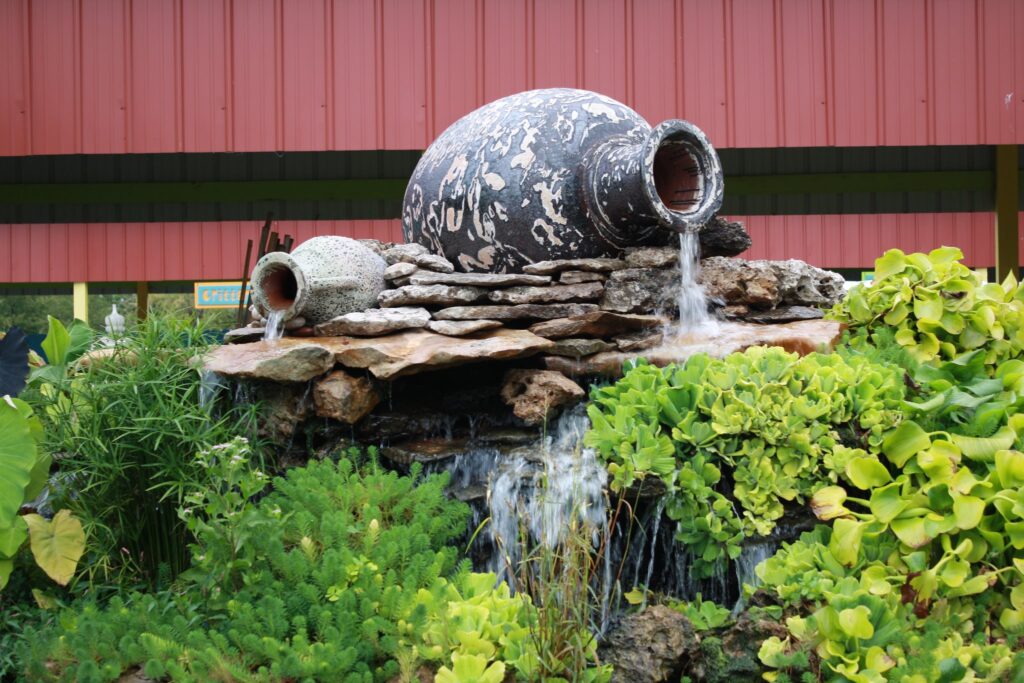

An eco-pond system is the most popular type of water feature being installed today. Through the creation of fish-safe rubber membrane and the explosion of water features in the early ’90s, there was very little information on pond design and construction. The only people who knew anything about ponds were water gardeners and koi keepers–two very different philosophies about pond construction. Through experimentation and taking cues on how the salt-water aquarium industry evolved, forward-thinking people realized what was required to build a water feature that was self-sustaining and composted its own waste, and who understand when a pond is growing (spring and fall) and existing (summer and winter). Our 360 Pond is a true eco pond.

In an eco-pond, we encourage nature to run wild in the pond. (Conversely, a true koi pond fights nature with UV radiation and a sterile environment.)
In an eco-pond, maintenance begins and ends at the skimmer. This cannot be stressed enough! 95% of all maintenance is at the skimmer, where a clean skimmer means a clean filter, and a clean filter means a healthy pond and good water quality. The effort you assign to your skimmer is a reflection of your desired water quality.
Cleaning your skimmer is easy. Empty the leaf basket often–at least three times a week. Even if there are only a few leaves in it, the leaves continue to decompose and add load to the system. The pre-filter pad on the partition must be cleaned at least once a week, slowly lifting it out to retain all debris on the filter mat. Rinse the mat at a sharp angle to peel the debris off (not driving it deeper into the mat). Flip it around and spray off the back, then spray the front once more. It should be clean after these steps.
More important than the skimmer basket and mat is the new floating debris that is drawn into the skimmer–especially uneaten fish food. This must be removed after each feeding. Nutrient-rich, uneaten food adds strain on your filters and feeds the algae. A small green maintenance net is just right for this purpose.
Provided you maintain your skimmer, your waterfall filter should only need to be cleaned twice a year, in early spring and fall.
To clean your filter, unplug the pump. If you installed a check valve assembly, the check valve will keep the water in filter. If you installed a back flush valve, open the valve to drain 3-4 inches of water out of the filter. To clean the bio media bags, simply agitate them vigorously in the standing water in the filter–do not use city (hose) water to clean these because of the chlorine in the water. Next, drain the dirty water out of the filter and remove the mats. It is okay to use hose water on the mats. Rinse or vacuum the bottom of the filter and return all the components to their proper place. The benefits of this cleaning process should last about six months.